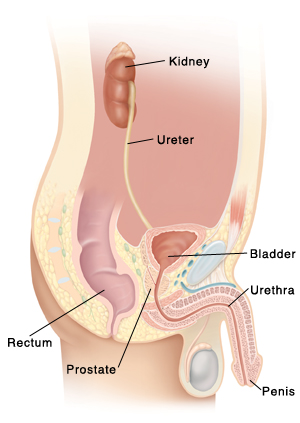Understanding Urinary Tract Infections (UTIs)
Most UTIs are caused by bacteria. But they may also be caused by viruses or fungi. Bacteria from the bowel are the most common source of infection. An infection may be more likely due to any of these:
-
Having sex. During sex, bacteria can go from the penis, vagina, or rectum into the urethra.
-
Bacteria outside the rectum getting into the urethra. Bacteria on the skin outside the rectum may go into the urethra. This is more common in people who were assigned female at birth. That's because, for them, the rectum and urethra are closer to each other than in people who were assigned male at birth. Wiping from front to back after using the toilet can help prevent germs from getting to the urethra. So can keeping the area clean.
-
Blocked urine flow through the urinary tract. If urine sits too long, germs may start to grow out of control.
-
A new sex partner within the last year.
-
A history of recurrent UTIs and antibiotic use.
-
Use of spermicide and diaphragm.
Parts of the urinary tract
The infection can occur in any part of the urinary tract.


-
The kidneys. These organs filter blood. They remove wastes and extra water to make urine.
-
The ureters. These tubes carry urine from the kidneys to the bladder.
-
The bladder. This holds urine until you're ready to pee.
-
The urethra. This tube carries urine from the bladder out of the body. It's shorter in people who were assigned female at birth. So, for them, bacteria can move through it more easily. The urethra is longer in people who were assigned male at birth. So a UTI is less likely to reach the bladder or kidneys for them.
© 2000-2025 The StayWell Company, LLC. All rights reserved. This information is not intended as a substitute for professional medical care. Always follow your healthcare professional's instructions.